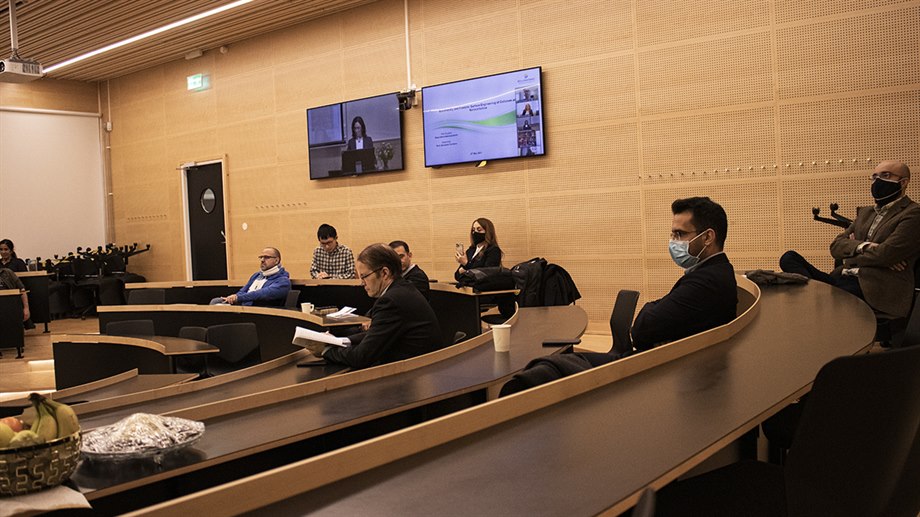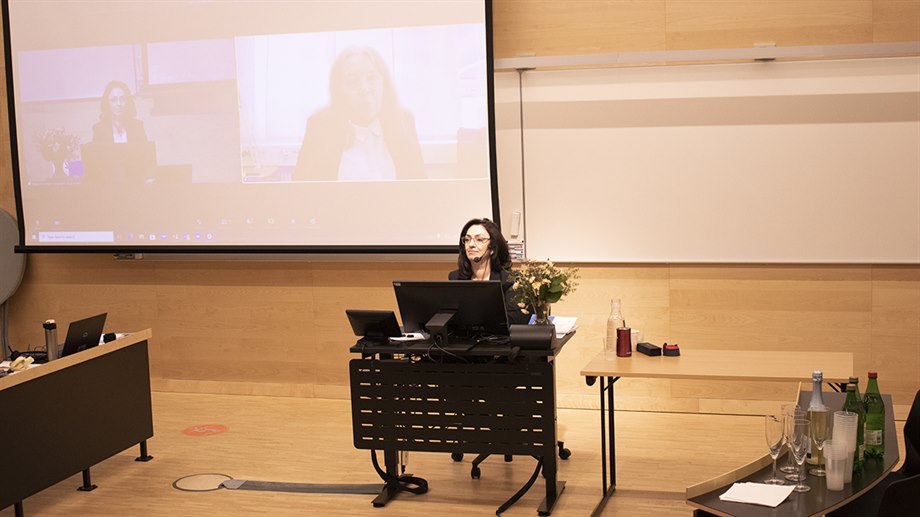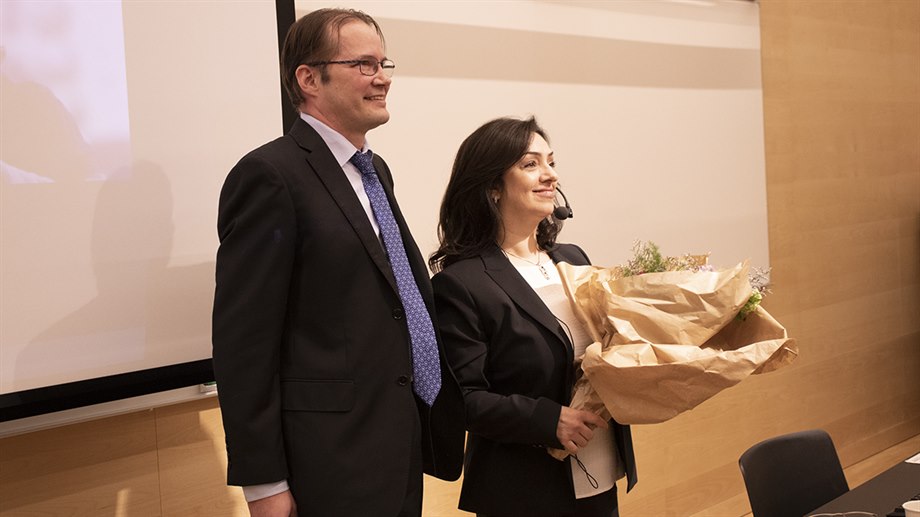av
Defence of the Thesis with Rana
On May 7 2021 Rana Alimohammadzadeh defended her Doctoral Thesis in Chemistry with the title "Eco-Friendly and Catalytic Surface Engineering of Cellulose and Nanocellulose" and she passed. Congratulations Rana!
Supervisor
Professor Armando Cordova, Mid Sweden University
Professor Dan Bylund, Mid Sweden University
Opponent
Professor Monica Ek, KTH
Exam committee
Adj. professor Thomas Granfeldt, Mid Sweden University
Dr. Rauni Seppänen, Holmen AB
Professor Juha Fiskari, Mid Sweden University
Professor Joseph Samec, SU
Professor Gunnar Henriksson, KTH
Read the Doctoral Thesis in DIVA
Abstract
The non-stop use of petroleum-based materials such as plastics can generate significant environmental problems, including pollution of the oceans and increased CO2 levels, and cause diseases like cancer due to the starting monomers. Consequently, increased use of sustainable and non-toxic polymers and monomers is required to address these issues. Cellulose, generously supplied by Mother Nature, is the most abundant biopolymer on Earth. Nanocellulose is a sustainable polymer extracted from the cellulose in wood or produced by bacteria and algae. This biodegradable nanomaterial has recently been receiving intense research attention, since it has great potential for use in a broad range of industrial and biomedical applications. However, it has limitations such as moisture sensitivity and incompatibility with hydrophobic materials due to its hydrophilic nature. Chemical modification is necessary for it to fulfill the requirements for applications that require high moisture resistance and water repellency. Unfortunately, several of the existing methods involve harsh and toxic conditions or reagents. In this thesis, together with my co-workers, I have employed the toolbox of organocatalysis for accomplishing eco-friendly and innovative surface modification of cellulose and nanocellulose. The organocatalysts we used most in our research are the naturally abundant and industrially relevant organic acids tartaric acid and citric acid.
Direct catalytic esterification of cellulose nanocrystal (CNC) with thioglycolic acid was performed either in suspension or on solid surfaces such as films and foams. We found that the reaction was accelerated by tartaric acid but could also be autocatalytic with respect to the thioglycolic acid under certain conditions. The synthesized CNC-SH was further exploited as a heterogeneous reducing agent as well as a handle for further nanocellulose modifications. This was demonstrated by using CNC-SH as a heterogenous reducing agent of Cu(II) to Cu(I), which is essential for allowing the Cu to act as a catalyst for 2,3-dipolar cycloaddition reactions between azides and alkynes. We also showed that the thia-modified CNC could undergo further functionalizing via thiol-ene click chemistry reactions, for example, we attached fluorescent compounds such as TAMRA and quinidine.
Herein we provide a fluorine-free method to prepare superhydrophobic CNC film with excellent water-resistance properties by combining self-assembly and organocatalysis. Self-assembly of CNC via vacuum filtration resulted in a film with a specific roughness at the microscale. Next, the catalytic silylation with a variety of alkoxysilanes in the presence of natural organic acids such as tartaric acid and citric acid was performed. The successful implementation of our method resulted in a super-hydrophobic CNC film (water contact angle over 150°) with excellent water-resistance. Thus, the combination of the self-assembly of a rough surface with catalytic surface modification resulted in a phenomenon like the “lotus effect” as exhibited by the leaves of the lotus flower. An investigation of the oxygen permeability of the octadecyltrimethoxysilane-modified CNC film revealed that it significantly decreased at high relative humidity compared with unmodified CNC films.
In this thesis, the fabrication of hydrophobic and functionalized MTM/CNF nanocomposites using organocatalytic surface modification with a large variety of alkoxysilanes is also performed. The surface modifications are mild and the mechanical strength of the Nacre-mimetic nanocomposites is preserved. Elemental mapping analysis revealed that the silane modification occurred predominantly on the surface.
A combination of organocatalyst and biopolyelectrolyte complex was applied for surface engineering of chemi-thermomechanical pulp (CTMP) and bleached sulfite pulp (BSP). The reaction was performed using a synergistic combination of an organocatalyst with a polyelectrolyte (PE) complex. Using this method, the strength properties of CTMP and BSP sheets were significantly increased (up to 100% in Z-strength for CTMP). Further investigations of the distribution of the PE complex were then performed using TAMRA and quinidine labeling and confocal laser scanning microscopy. This revealed that an even distribution of the cationic starch component of the PE complex had occurred within the CTMP-based paper sheets, which follows its lignin distribution pattern.








